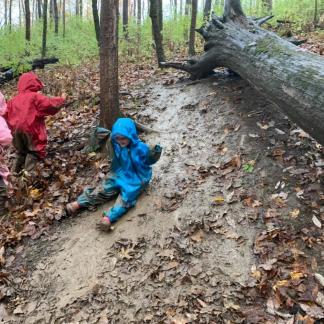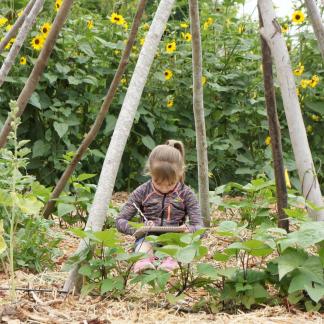Member Spotlight
Building Blocks Preschool: A Nature School
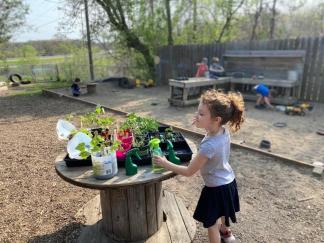
Building Blocks Preschool was founded in 2004 by Suzanne and Joe Gabli, who wanted to create a safe, natural, nurturing learning environment for young children in their community. The program is rooted in the Reggio Emilia approach, emphasizing children as curious, competent, and capable learners.
Learning is child-led and teacher-supported, with children learning through play, conversation, and direct experience. This developmental approach respects everyone for who they are and encourages growth in all realms: head (knowledge), heart (social and emotional), and hands (physical). The environment is the third teacher, and both indoor and outdoor learning spaces are nature-rich.
Next year, Building Blocks Preschool will be celebrating its 20th anniversary!
Natural Start spoke with Founder and Executive Director, Suzanne Gabli, to learn more about the preschool.
Tell us about your school community - what makes it special?
Our school is a special place, for children and families, because of the outstanding teachers dedicated to young children and nature. The teachers here at Building Blocks have backgrounds in early childhood education, environmental education, fine arts, child psychology, and a deep belief that time in nature is a necessary part of growth and development for children.
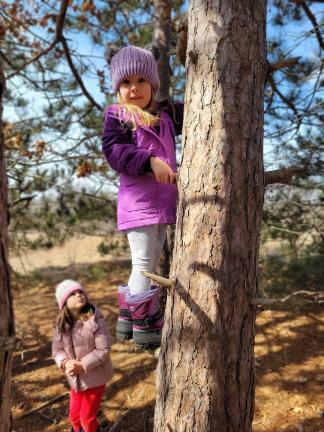
Can you share more about how children engage with the land at Building Blocks?
The preschool is part of Highland Recreation Area, giving children access to almost endless natural resources, including a pond, streams, prairie, forest, a variety of wildlife, gardens, bees, birds, and wildlife. Children typically spend about 70% of the day outdoors, playing in one of the two outdoor classrooms, or on nature walks, exploring the 5,000 acres of land that make up the Highland Recreation Area.
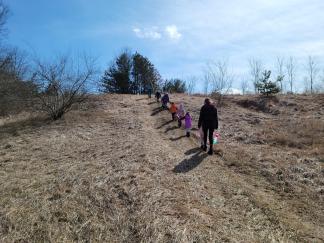
The intention and experience varies with each visit to the Recreation Area, as the seasons change and new things happen in the area. Children climb low trees, enjoy a sandy jumping spot, and have space for dramatic play. A teacher will lay out a blanket for observational journal drawing or storytime. Children will use sticks they find in the woods to build shelters. Sometimes, we go on a two-mile hike to our Tree House.
In our outdoor classrooms, with the help of our teachers, children plant and maintain impressive gardens filled with raspberries, strawberries, beans, cucumbers, as well as many flowers and herbs.
How do you involve parents in the school?
Parents are involved in many ways in our school. We have volunteer opportunities such as playground clean-up, nature walks, an annual egg hunt, Light at Night, and fundraising. We also host parent workshops on topics such as Balanced and Barefoot, the importance of play, clay play, family picnics, parent night out, and other social gatherings. Classroom visits are encouraged–families often participate in March is Reading Month, family holidays and heritage rituals, and outdoor experiences.
Tell us how you got started and what advice you would give to those just starting a program.
Anything is possible with a vision, research, and collaboration with like-minded communities. Early on, we connected with Heavner Canoe Livery here in Milford, MI, and found we were both passionate about No Child Left Inside. Through our local business association, we became part of a bigger community creating Heavner Nature Connections in 2009.
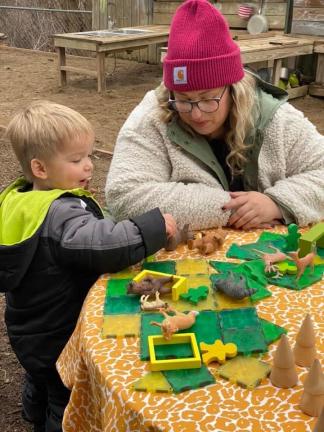
It is important to realize that teachers who do this work are specialized. I recommend hiring nature educators with an early childhood background. We have specialized training for our teaching team and collaborate with other ECE educators to grow in our practice. We recognize there is a certain amount of grit that is needed to be able to go outside in all of the weather.
Last but not least, I encourage collaboration and connection to other teachers who are doing nature-based practice. It can feel like we are in our own island. Find other educators who are doing this work and pick up the phone or email to connect. And tour other nature-based programs for inspiration!


